3 Days in Lisbon | The Ultimate Lisbon Itinerary
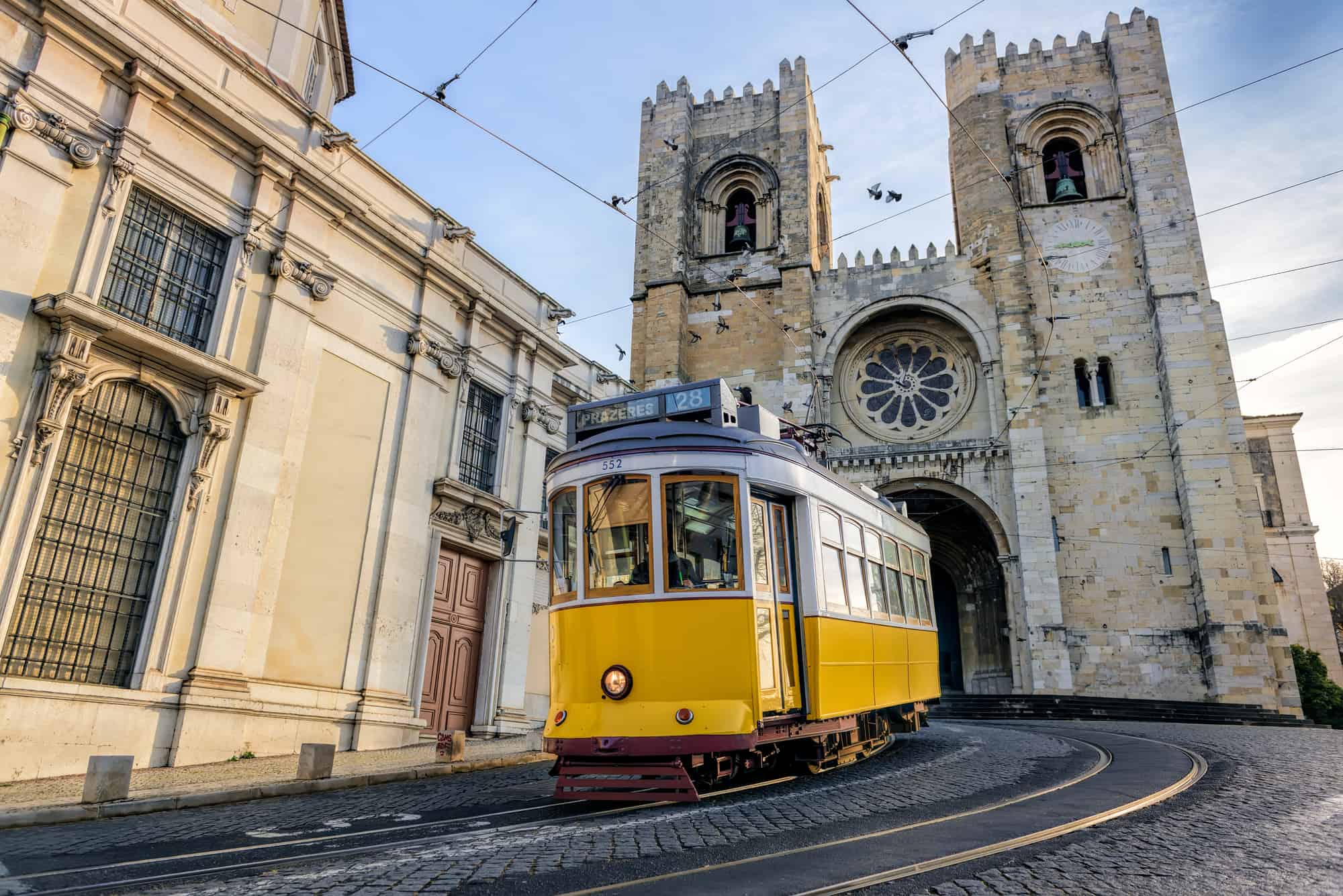
Look. The only reason I’m here is to find out if I’m related to Cristiano Ronaldo, and I have 3 days in Lisbon to figure it out!
The thing is, I’m not even joking. For years, I’ve been told that my great, great-grandfather was Portuguese. Information relayed through oral history, as my cousin Tanya would call it, stories passed down from generation to generation.
So how did I get to the Portugal conclusion?
- Well, for starters, there’s a sepia-toned oval-framed portrait of a white man with a beautiful young black lady that hangs on the wall of my mother’s childhood home.
- Whenever she can, my cousin Tanya puts in some painstaking work gathering documents: government records, marriage certificates, and death certificates. She traced our family tree to the sepia-toned oval-framed portrait.
- My cousin provided me with a hand-printed Family Tree which, with family members’ permission, has been entered into an Ancestry database. All that’s left is my DNA.
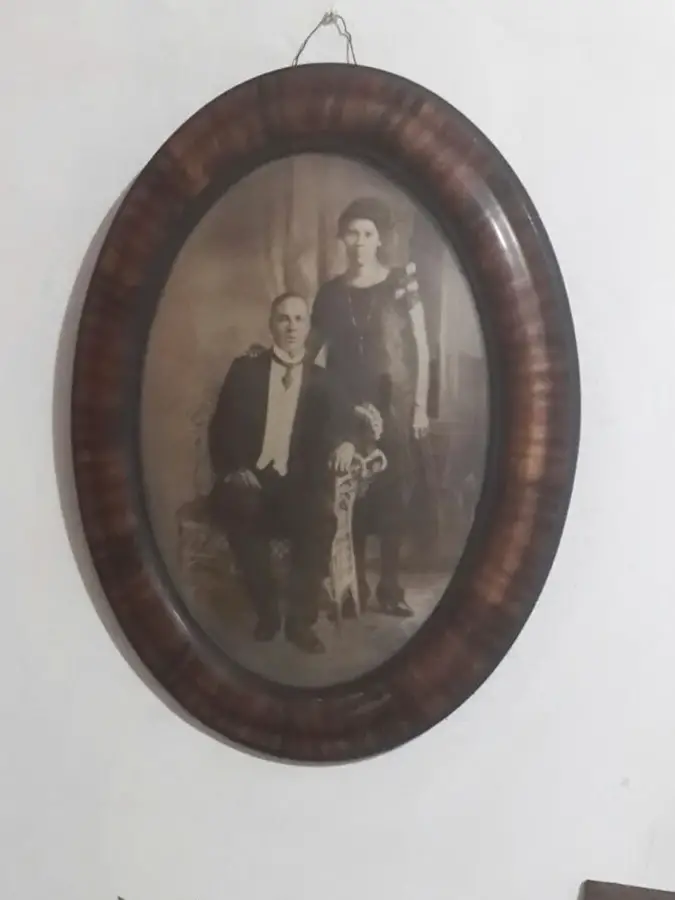
This all left me with a nagging desire to visit Portugal for myself…
Lisbon is a beautiful city with much to offer. From its stunning architecture and rich history to its delicious food and amazing weather, it’s no wonder why it’s such a popular holiday destination. One thing to note about Lisbon is that it’s all about the details. From the intricate and gorgeous tile and pattern work on the sidewalks and squares to the breathtaking tile work on the buildings. It’s incredible!
With just a few days in Lisbon, you can easily explore the city’s main attractions and taste what this vibrant capital offers.
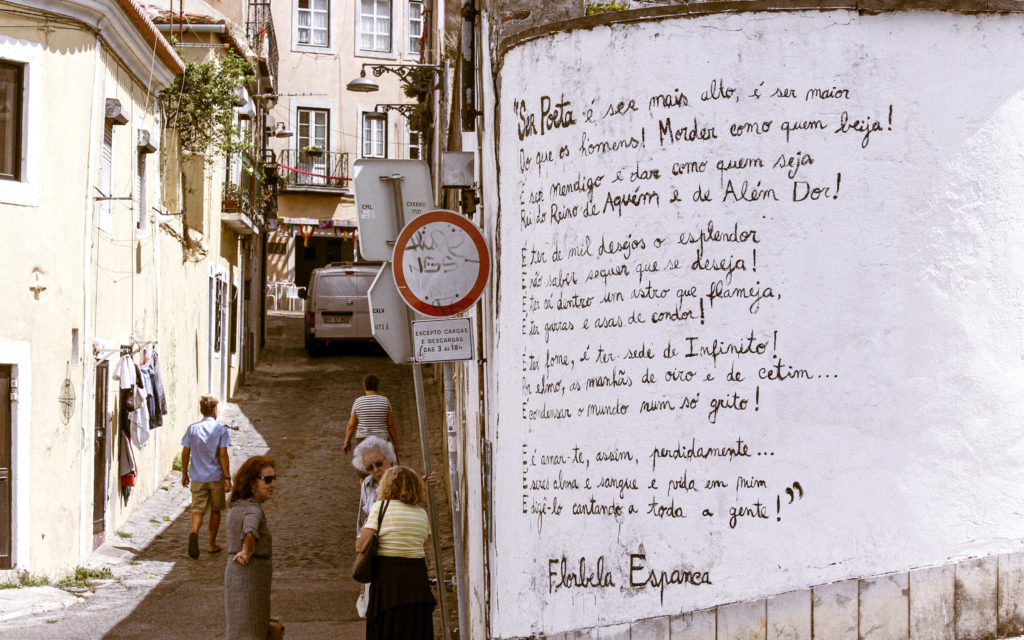
Subscribe to our YouTube Channel for more in-depth stories and interviews.
History Of Lisbon
- One of the oldest cities in western Europe, Lisbon has a history that stretches back to its original settlement by the indigenous Iberians.
- It flourished in the 15th and 16th centuries as the centre of a vast empire during the period of Portuguese discoveries. This was a time of intensive maritime exploration when the Kingdom of Portugal accumulated great wealth and power through its colonization of Asia, South America, Africa, and the Atlantic islands.
- Evidence of the city’s wealth can still be seen today in the magnificent structures built then, including the Jerónimos Monastery and the nearby Tower of Belém, each classified as a UNESCO World Heritage Site in 1983.
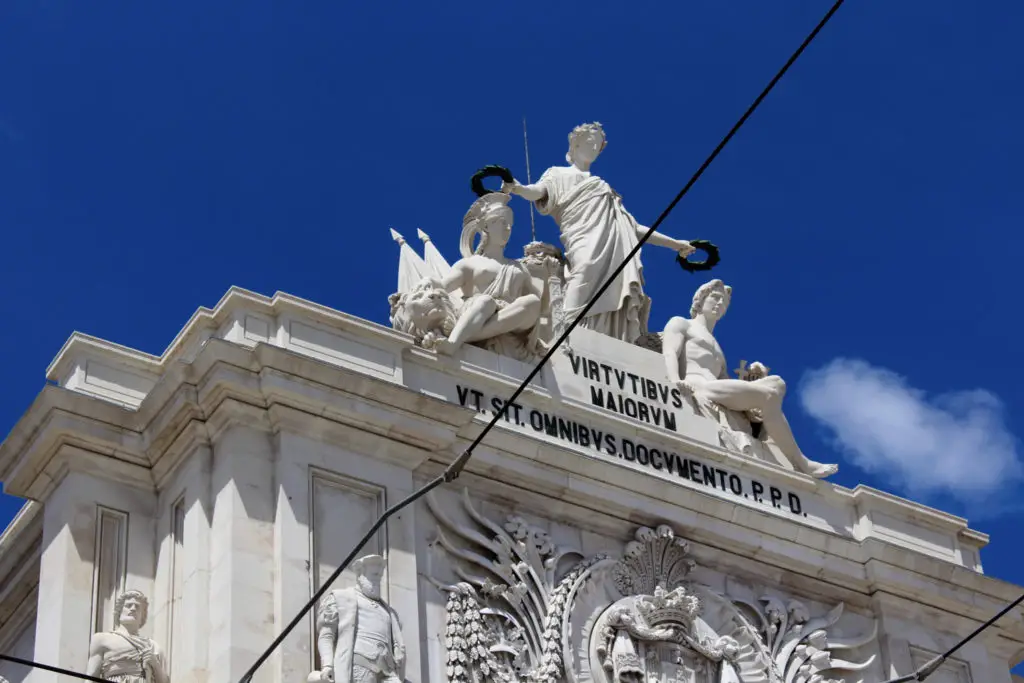
Getting To Lisbon
Before we get into the details of my Lisbon travel guide, let’s start at the beginning. What are the best options for travelling to the city? The answer will vary, depending on where you are travelling from and your preferred form of travel. But here are the three most common ways:
Plane
American Airlines has direct flights from Philadelphia to Lisbon during the spring and summer. Tap Portugal connects Boston, Miami, and New York JFK with Lisbon. United Airlines also offers direct flights between New York JFK and Newark to Lisbon.
Travellers can now fly directly from Toronto to Lisbon thanks to Tap Portugal’s nonstop flights, which launched in the spring of 2017. Air Canada and Air Transat also have direct flights between Toronto, Montreal, and Lisbon during the peak summer months.
In the United Kingdom, those who want to travel to Lisbon have a range of budget airlines to choose from. A flight from London to Lisbon will last two and a half hours. Several airports across the UK, including Bristol, Edinburgh, Liverpool, London Gatwick, and London Luton, are accessible via flights from EasyJet. While British Airways flies from London’s Heathrow Airport, Ryanair provides service from STN in London, along with Manchester and Glasgow.
Train
If you plan to travel around Portugal, you might consider travelling by train. Not only is this a reliable way to visit Lisbon, but it also offers a unique travel experience with some beautiful views. The journey between Porto and Lisbon takes approximately 3 hours. If you are travelling from Spain to Lisbon, you can take a night train that leaves every day from Madrid. The journey takes roughly 10 hours and costs a minimum of 60€. This means of transportation is the slowest and most expensive, but you might prefer it to a plane.
Car
For those who are already traversing through Portugal, you may want to visit Lisbon by car. For instance, if someone wishes to drive from Porto to Lisbon, the trip will take 3 hours. This also means you would have the use of a car during your stay, which can be a big perk.
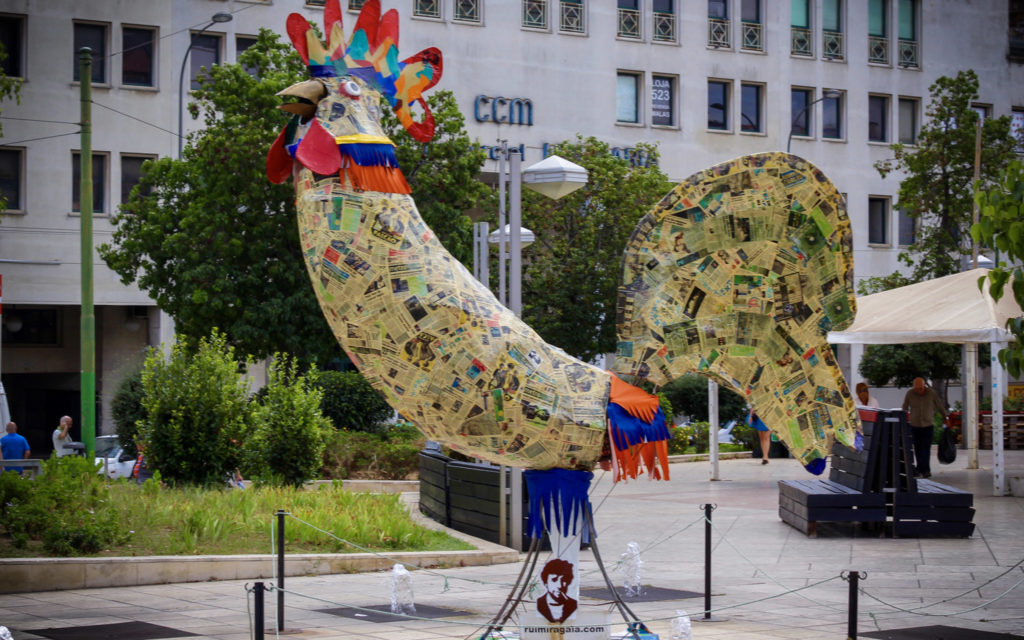
Getting Around Lisbon
A factor that could influence your travel plans is the walkability of the city. Is it easy to get around Lisbon without a car? The short answer is, yes! However, the city is famously hilly, and there are some attractions that will take you a little further from the downtown core. Luckily, there is a public transit system that can help.
Lisboa Card
To experience the top sights of Lisbon, it is suggested that you obtain a Lisboa Card. This card is available as a 24, 48, or 72-hour day pass. It provides unrestricted use of city buses, trams, and trains during that period and free admission to 26 top Lisbon attractions. The Lisboa Card is an ideal way to explore the Portuguese capital if you don’t have a car at your disposal.
Car
Whether you’re driving to the city or renting a car upon your arrival, there are some important considerations. Here’s what you need to know about driving around Lisbon:
Know the Rules of the Road Before You Go
Portugal follows some different rules compared to other European countries. Be sure to familiarize yourself with all the rules before you start your drive. Also, ensure that you have car insurance coverage, as it’s mandatory.
Use GPS To Avoid Lisbon Traffic
Traffic can be an issue in any big city, and Lisbon is no exception. A GPS navigation system can help you navigate traffic jams or provide alternate routes if the roads are congested. There are also apps available that can help you find parking spots near your destination before you arrive.
Know Where to Park Your Car
Street parking is available but limited, so finding an open spot can be challenging during peak season or weekday afternoons when people are commuting. For longer stays in the city centre, secure garages are recommended as they may offer 24/7 service and assistance if something happens while your vehicle is parked there.
Pick up Rental Cars at the Airport
Lisbon’s international airport (Humberto Delgado Airport) has plenty of rental car companies with competitive prices that travellers can use for their stay in Lisbon. This option tends to be more expensive than car-sharing networks or public transportation, but it often offers more comfortable vehicles and peace of mind.
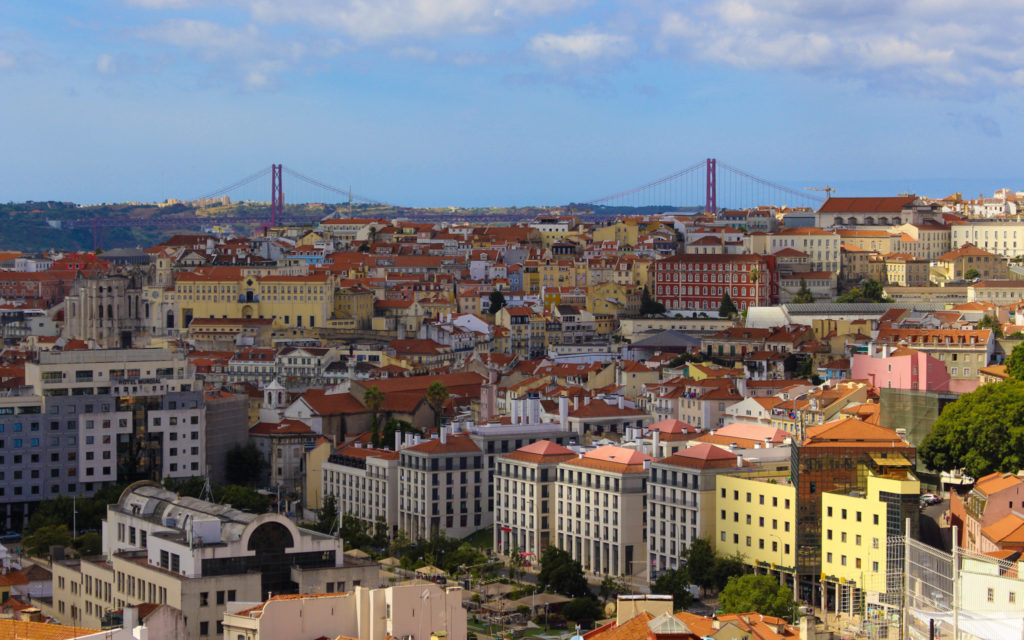
Best Places To Visit In Lisbon | 3 Days In Lisbon, Day 1
Baixa District
A Lisbon must-see is the Baixa district, renowned for its grand plazas and vibrant shopping centers. The area was completely reconstructed after the 1755 earthquake, creating a grid street design that was revolutionary for its time.
Baixa is a vibrant and exciting Lisbon area, making it an ideal spot to start sightseeing. It’s the main tourist district and can be easily accessed by metro at Rossio or Terreiro do Paço stations.
Rossio Square
Rossio Square is another one of those typical European squares that made me fall in love with Europe. It’s the perfect place to start your visit to Lisbon!
In the center of the square is a monument with two fountains on either side. It’s the perfect spot for three of my favourite pastimes – drinking beer, sipping coffee, and people-watching. Located just north of the city centre, it is a great way to get oriented and used to the city’s look.
In addition to the monument and fountains, the square features beautiful wavy tile patterns, statues, and eye-catching buildings surrounding it, including the National Theatre.
The National Theatre D. Maria II
The National Theatre D. Maria II is a beautiful neoclassical theatre built in 1846 and has been home to some of Portugal’s most renowned theatrical performances. The theatre is named after Queen Maria II, the daughter of King João VI and mother of King Pedro V.
It’s an architectural marvel, with grandiose columns and ornate decorations. I immediately fell in love with the stunning ceiling frescoes painted by Portuguese artist José Malhoa in 1901.
The theatre also houses a museum dedicated to the history of Portuguese theatre, which includes costumes, props, and other memorabilia from past productions.
Visitors can take guided tours around the building or attend one of the many performances throughout the year.
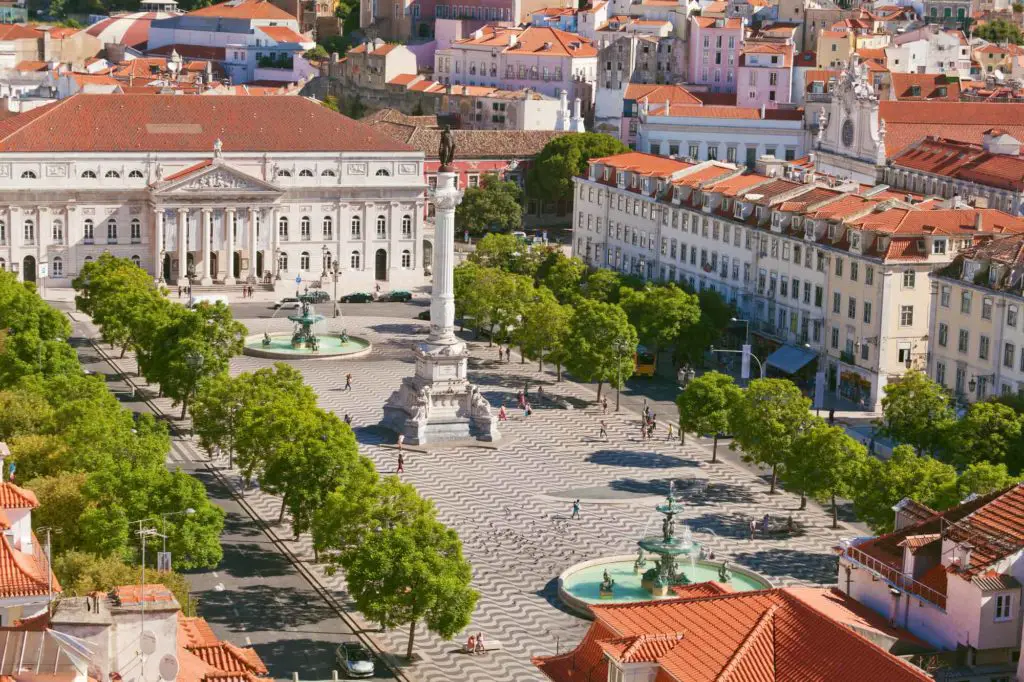
Praça dos Restauradores
Praça dos Restauradores is a square located in the heart of Lisbon. It was built to commemorate the restoration of Portuguese independence from Spanish rule in 1640.
Garden of São Pedro de Alcantara
The Garden of São Pedro de Alcantara is a beautiful terraced garden located in the Bairro Alto district of Lisbon. The garden was built in the 18th century and offers stunning views of the city from its highest point.
It’s also home to several monuments, including a statue of King João VI and a monument dedicated to those who died in World War I. During your visit, you can also explore the ruins of an old convent found at this site.
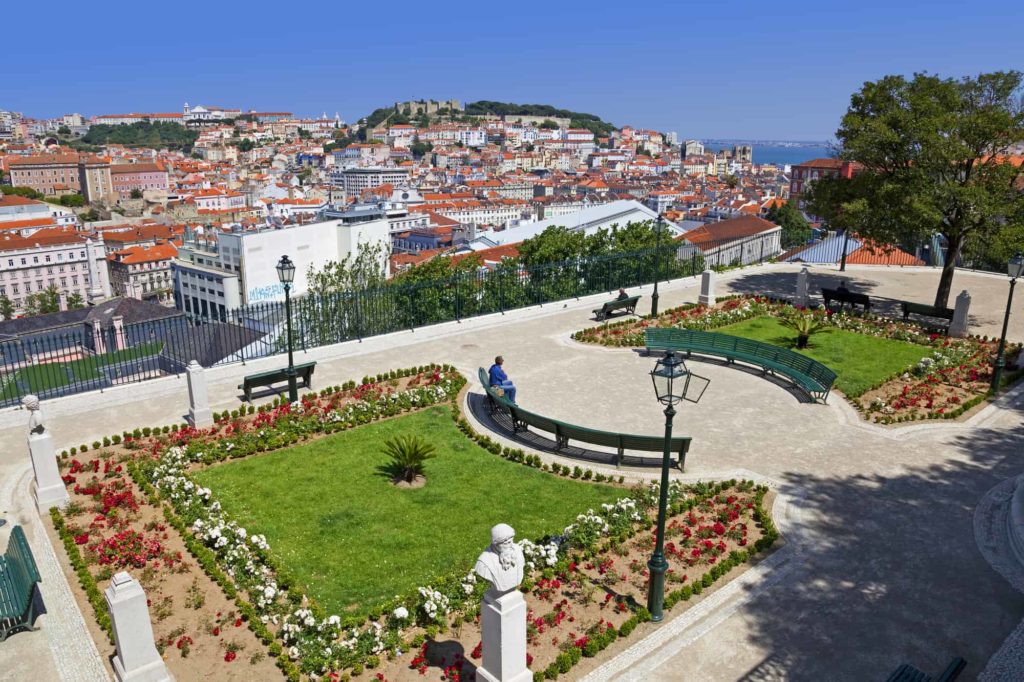
Santa Justa Lift
Another one of the fun things to do in Lisbon is to ride the Santa Justa Lift. It is a charming and old-fashioned mode of transportation, built in 1902. This antique lift looks like a contraption from a bygone era, creating a sense of nostalgia.
It takes passengers up to the top of the hill, where they can find the ruins of the Carmo Convent.
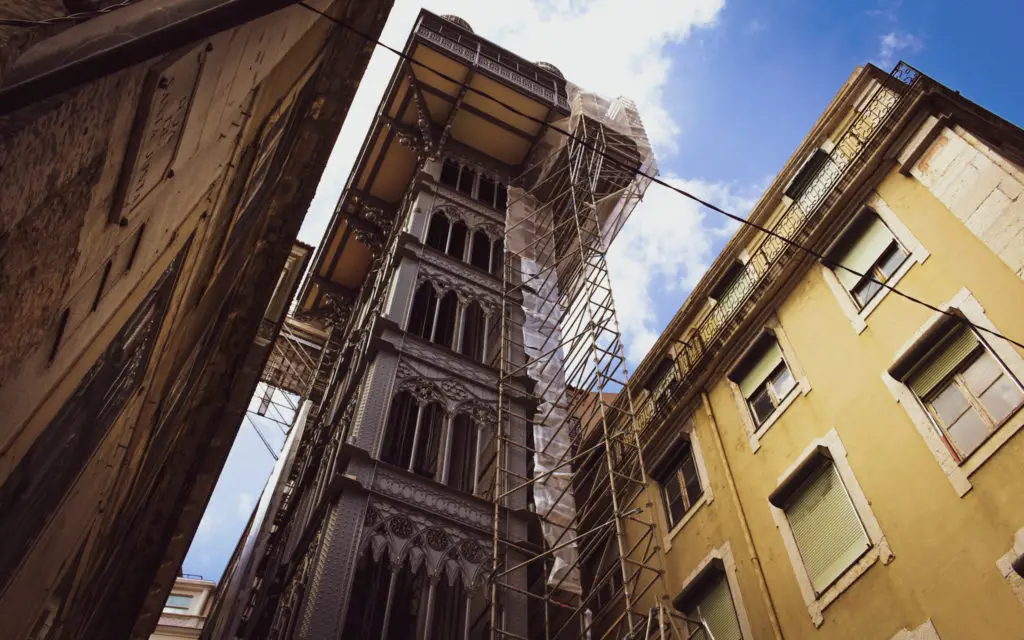
Carmo Convent | Convento do Carmo
From the square in front, the Carmo Convent may not seem like much, but it’s only after entering the convent that you’ll be able to appreciate its beauty. The convent is now a museum with artifacts that speak to its history and importance, making it one of the top places to visit in Lisbon. However, the only feature missing from this former church is a roof, making for quite an uncanny experience as you explore the beautiful architecture of its open-air ruins.
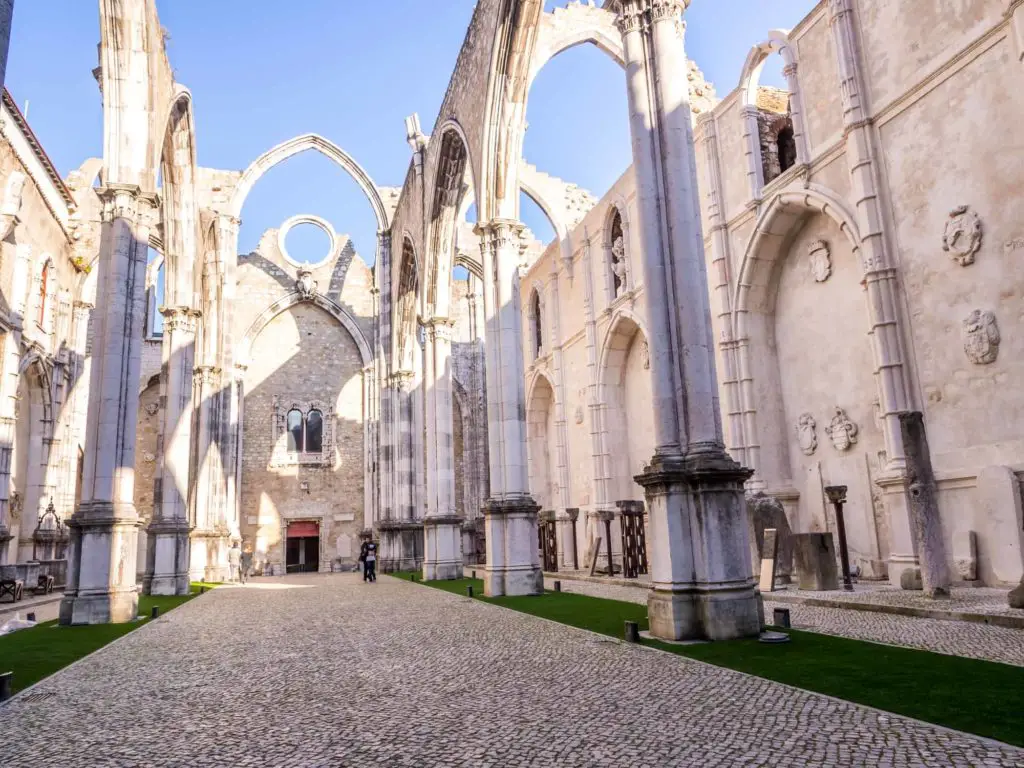
Rua Augusta
Rua Augusta is one of the city’s most popular streets and a great place to explore. This pedestrian street is lined with shops, restaurants, and some of the best cafes in Lisbon, making it another great spot for people-watching.
Commerce Square | Praça do Comércio
The Praça do Comércio is one of the most iconic spots in Lisbon, and it’s easy to see why. The square is framed by three elegant and impressive buildings built following the devastating earthquake of 1755 that changed the face of Lisbon forever.
Many festivals, concerts, processions and executions have occurred over the last centuries. Visitors can also take a boat ride along the Tagus River from here.
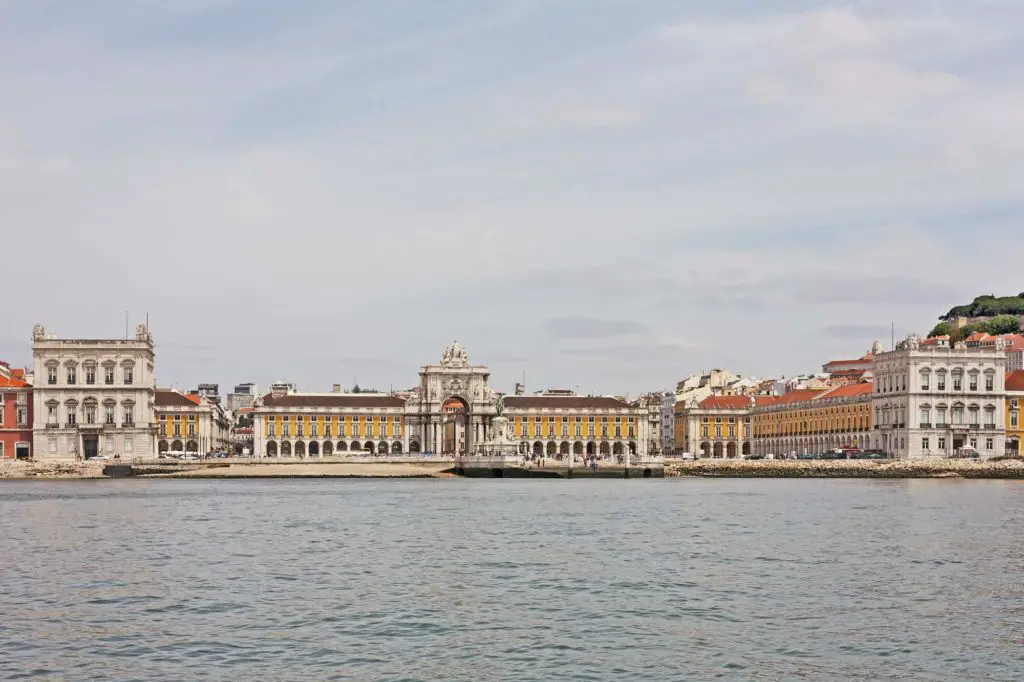
Arco da Rua Augusta
Arco da Rua Augusta is a triumphal arch located in the center of Lisbon. It was built to commemorate the city’s reconstruction after the 1755 earthquake and tsunami.
It is decorated with sculptures depicting scenes from Portuguese history, including Vasco da Gama’s voyage to India and the Battle of Aljubarrota.
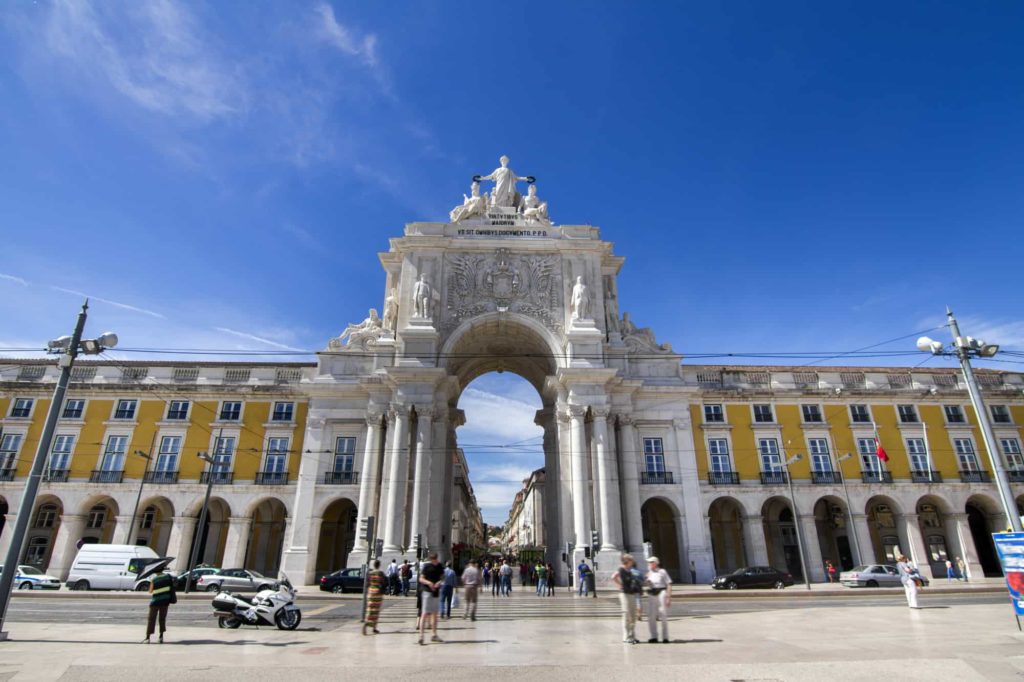
Alfama
One of my favourite places to explore during my 3 days in Lisbon was the Alfama neighbourhood, a charming neighbourhood that offers visitors a unique glimpse into the city’s past. Located just east of Praça do Comércio, Alfama is full of winding streets and vintage architecture that will make you feel like you’ve stepped back in time.
The best way to explore this area is by hopping aboard one of Lisbon’s iconic trams, like Tram 28 (more on that to follow).
Alfama also has some notable religious and historical landmarks worth visiting. The most impressive of these has to be the Lisbon Cathedral, which dates back to 1147 and stands tall at the top of a hill overlooking the city.

Tram 28
I was told by friends, colleagues and fellow travel bloggers that when planning what to see in Lisbon, riding tram 28 to climb the steep hill from Baixa to the castle and Alfama is an absolute must. These trams are a huge part of the Lisbon public transport network – plus your legs and glutes will thank you.
You find Tram 28 at Martim Moniz Square (Praça Martim Moniz), and the final stop is right in front of A Padaria Portuguese. This is one of the best bakeries in Lisbon!
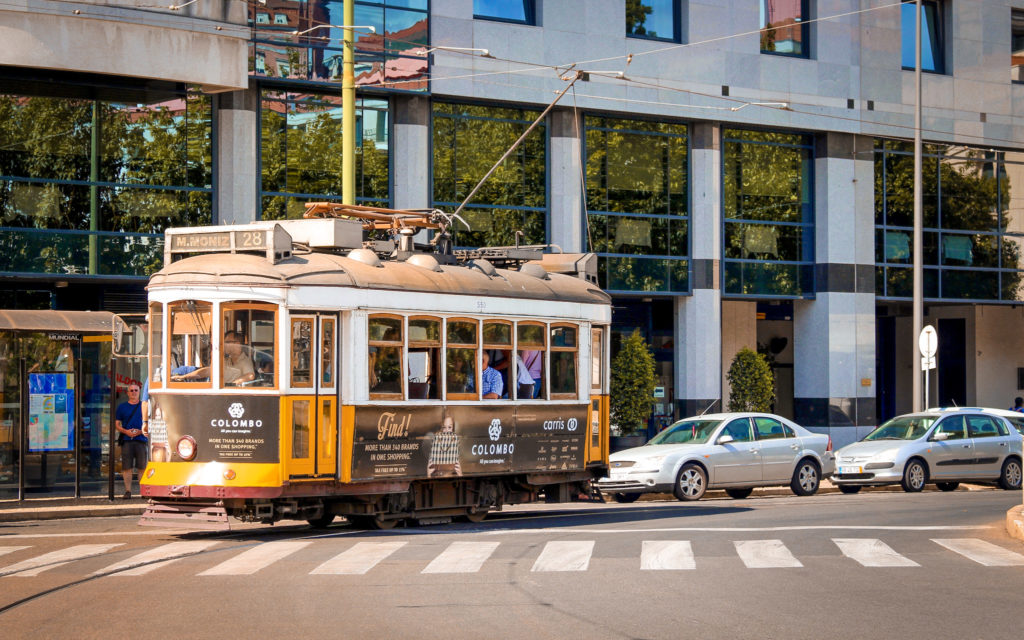
As the tram wound through the narrow streets, I really had a chance to appreciate how small and quaint the neighbourhod actually is. The views alone were well worth the ride.
FYI. When and if you can finally decide what you want for lunch, you will have to take a token and wait for your turn.

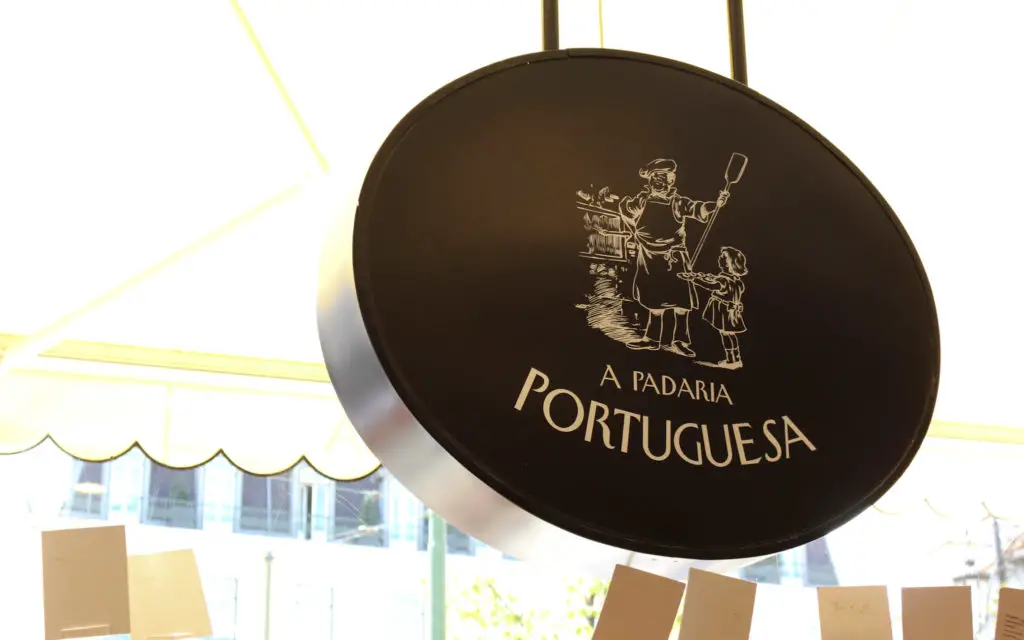
São Jorge Castle
Regarding Lisbon sightseeing, one of the things you can see almost everywhere in the city is São Jorge Castle. This majestic castle stands tall above the Alfama neighbourhood of Lisbon, Portugal. Built by the Moors in the 12th century, it was used to watch over the city and grew in importance when Lisbon became the capital of Portugal in 1255.
Visitors must purchase tickets online or at the gate to enter this historic castle, with prices starting from 8.5€. Your ticket provides access to the castle’s grounds and gardens with stunning views of the city and river below.
Once inside, you can explore its many attractions, including admiring its high walls from the castle keep and learning about its rich history. The castle also houses several museums, such as Museu de Arqueologia e Etnografia de Lisboa, which displays artifacts from prehistoric times to the present day.
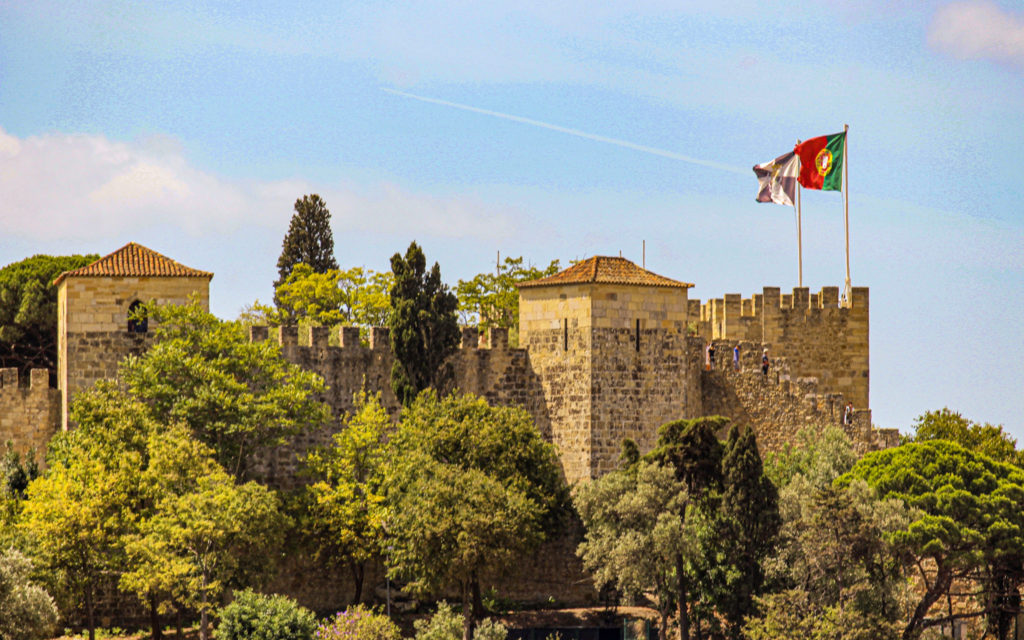
Miradouro da Graça | Graça’s Viewpoint & Miradouro da Nossa Senhora do Monte | Our Lady of the Mountain Viewpoint
If you haven’t already noticed, Lisbon is full of hills. Not a problem for some, painful for others but one of the benefits of hills is the great sweeping views!
Heading north of the castle, you can find several stellar viewpoints by navigating the city’s backstreets. Often positioned by churches or green squares, these views are sometimes even better than those found at the castle. I highly recommend taking some time to search out some of your own hidden gems in Lisbon during your visit.
Two incredible viewpoints to look for are Miradouro da Graça (Graça’s Viewpoint) & Miradouro da Nossa Senhora do Monte (Our Lady of the Mountain Viewpoint). Both make a great spot to end your day watching the sunset over Lisbon.
Igreja Paroquial da Graça | Church of Our Lady of Grace
Located at Graça’s Viewpoint is the Church of Our Lady Grace. Igreja Paroquial da Graça (Graça Parish Church) is a beautiful church built in the 18th century; it stands as an example of Baroque architecture and is one of the most important religious sites in Portugal.
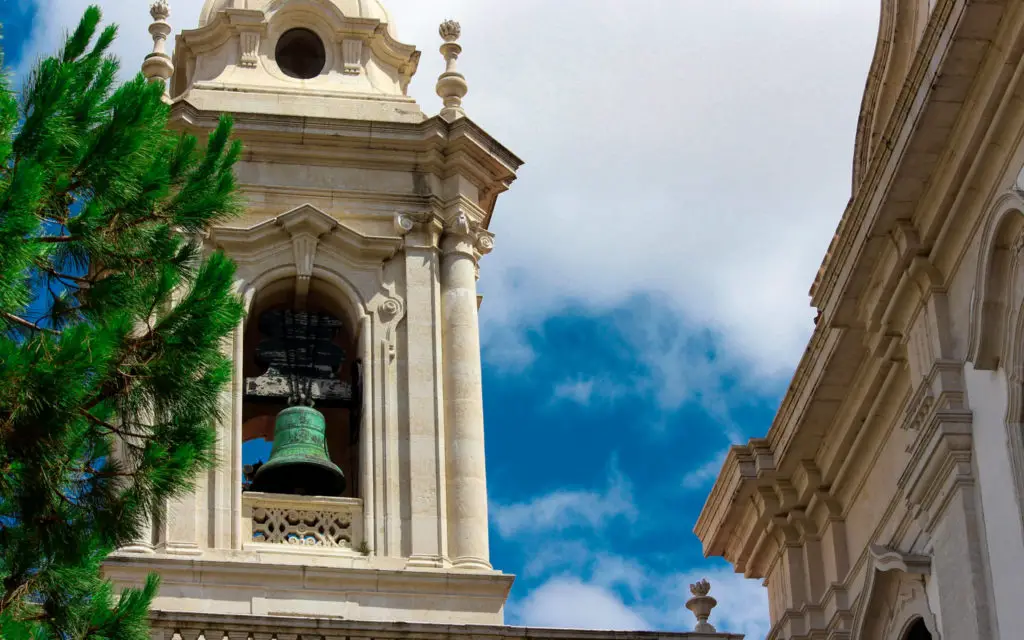
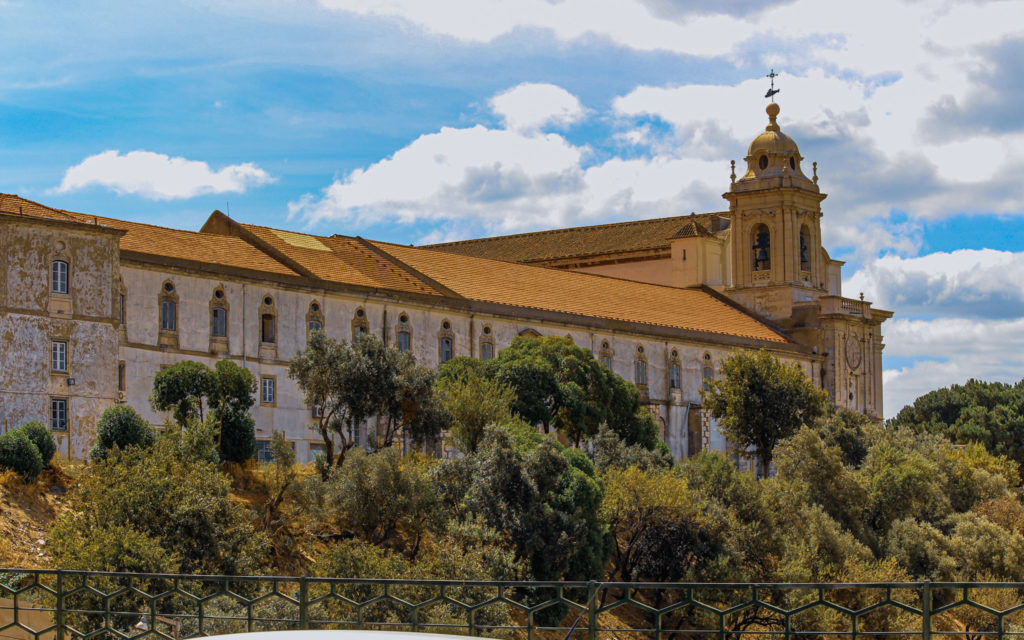
Capela de Nossa Senhora do Monte | Chapel of Our Lady of the Mountain
At Our Lady of the Mountain Viewpoint, you will find The Chapel of Our Lady of the Mountain. This is a small chapel located at the top of one of Lisbon’s highest hills. It was built in 1770 and is dedicated to the Virgin Mary, who is said to have appeared on this hill in 1517.
The views from these hilltop viewpoints are truly breathtaking and offer an incredible perspective of Lisbon. Whether it’s during the day or night, you’ll be able to take in all of Lisbon’s beauty from up high.
To get down once you’re done, both have grand long staircases that lead back into the city centre.
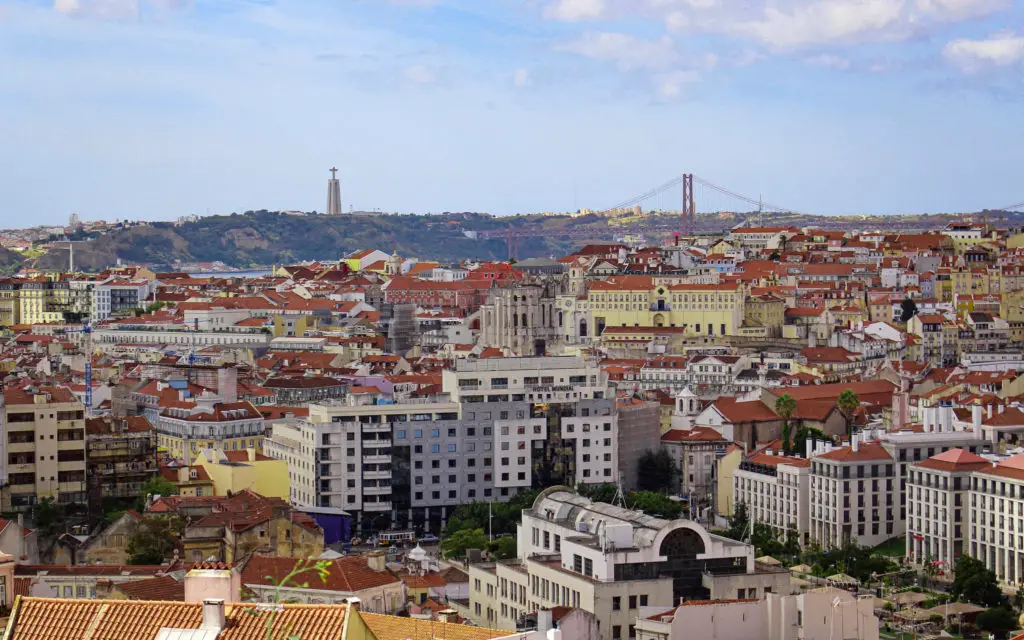
Church of São Vicente de Fora
The Church of São Vicente de Fora (São Vicente de Fora Monastery) is a stunning example of Manueline architecture. Built in 1582, it was originally a monastery and is now one of Portugal’s most important religious sites.
The church features several chapels, each dedicated to different saints and decorated with beautiful paintings and sculptures. You can also explore its cloisters and gardens, filled with lush plants and fountains, and a museum where visitors can learn about its history and admire some of its artifacts.
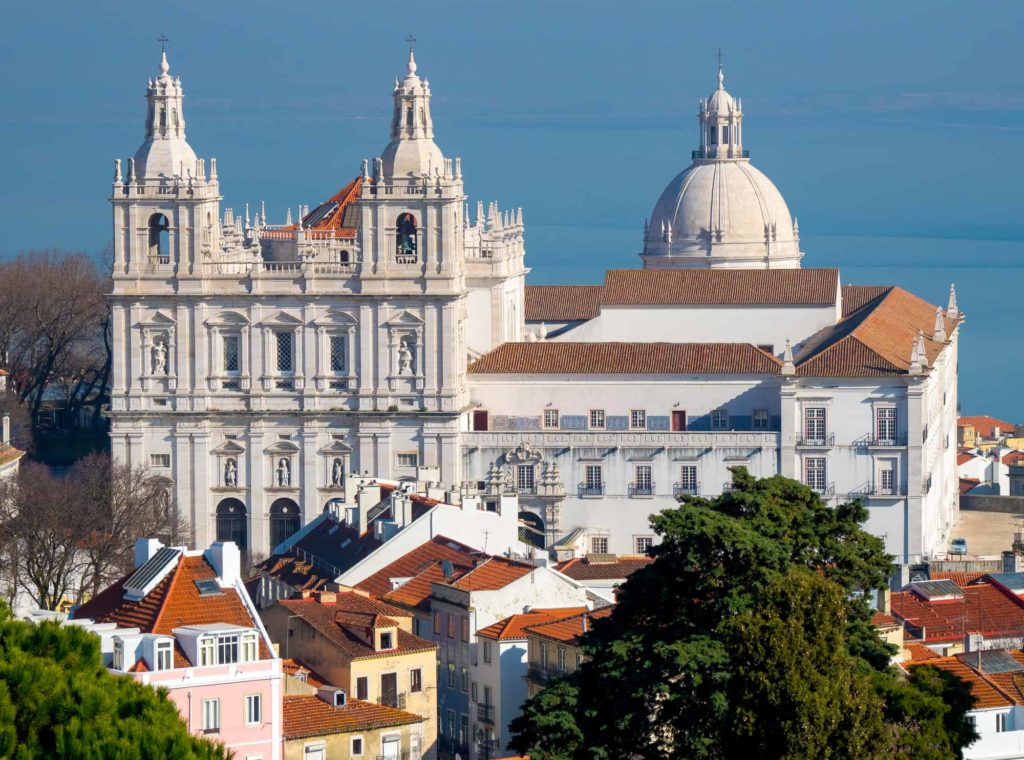
National Pantheon
The National Pantheon was built in the 18th century and is dedicated to Portugal’s most important figures. Here, you can admire its beautiful architecture and explore its many chapels, each dedicated to a different figure.
The Pantheon also houses several tombs of famous Portuguese people, including writers, poets, and politicians. You can take part in guided tours that explain the history of the building and its significance to Portugal’s culture.
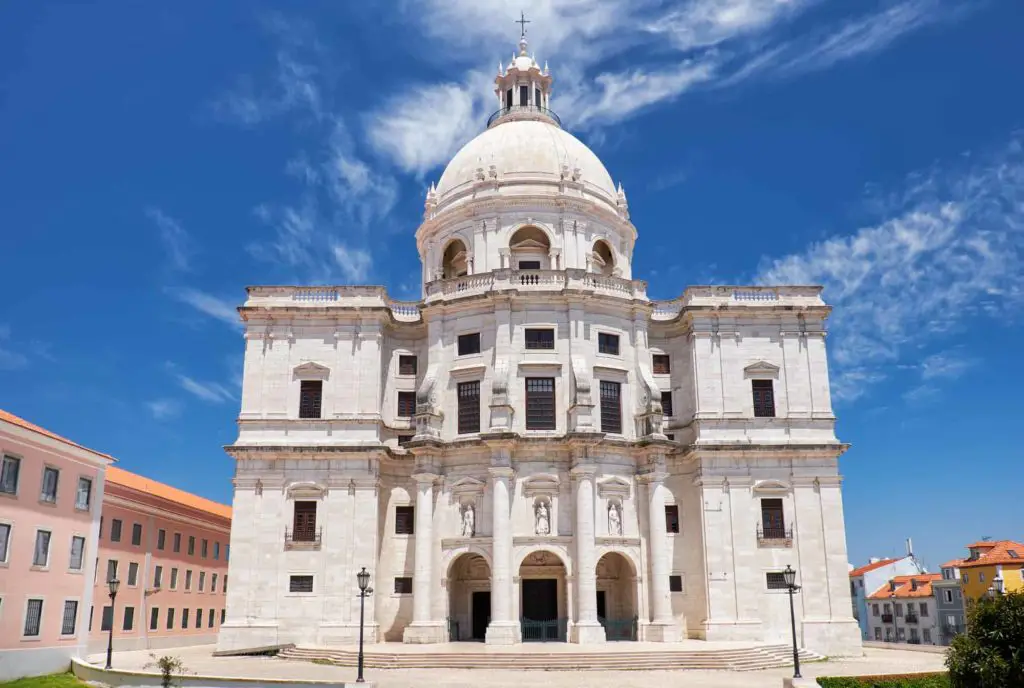
Se Cathedral | Lisbon Cathedral
Lisbon Cathedral is one of Portugal’s oldest and most important religious sites. Built in 1147, it is a stunning example of Romanesque architecture and features several chapels dedicated to different saints.
During your visit, you can explore its interior, admire its beautiful stained glass windows, and take part in guided tours that explain the history of the building. The cathedral houses several tombs of famous Portuguese people, including kings and queens.
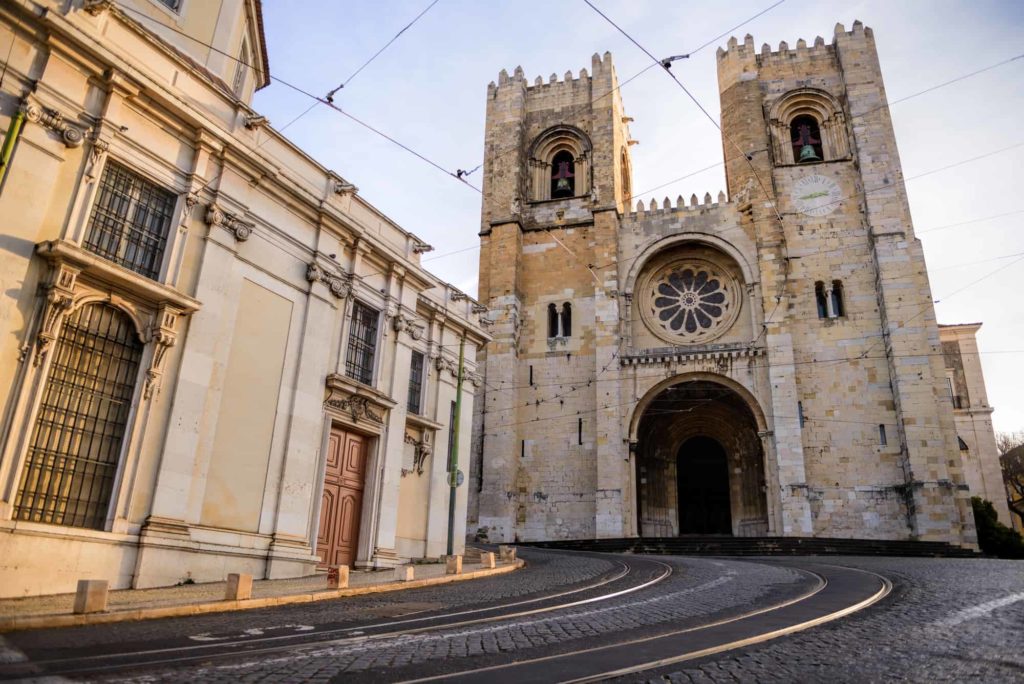
Portas do Sol viewpoint
The Portas do Sol viewpoint is one of the most popular spots in Lisbon, and for good reason. It offers a stunning view of the city, with its terraces and gardens providing an ideal spot to relax and take in the views.
Fado Music
The vibrant neighbourhood of Bairro Alto is the perfect place to end your first day in Lisbon. This area is home to various restaurants and fado bars, where you can enjoy traditional Portuguese cuisine and music. Fado is a type of folk music that originated in Portugal, and it’s often performed live at these venues. The Mascote da Atalaia is a bar where you can listen to melancholic tunes while savouring delicious dishes.
The atmosphere at these fado bars is truly unique. As you listen to the passionate singing and guitar playing, you can also take in the sights and smells of the restaurant. The menu typically includes classic Portuguese dishes like bacalhau (codfish) or feijoada (stewed beans). Enjoying dinner with some live fado music is an unforgettable experience that will make your trip even more special. So don’t miss out on this opportunity to explore Bairro Alto’s culture and cuisine!
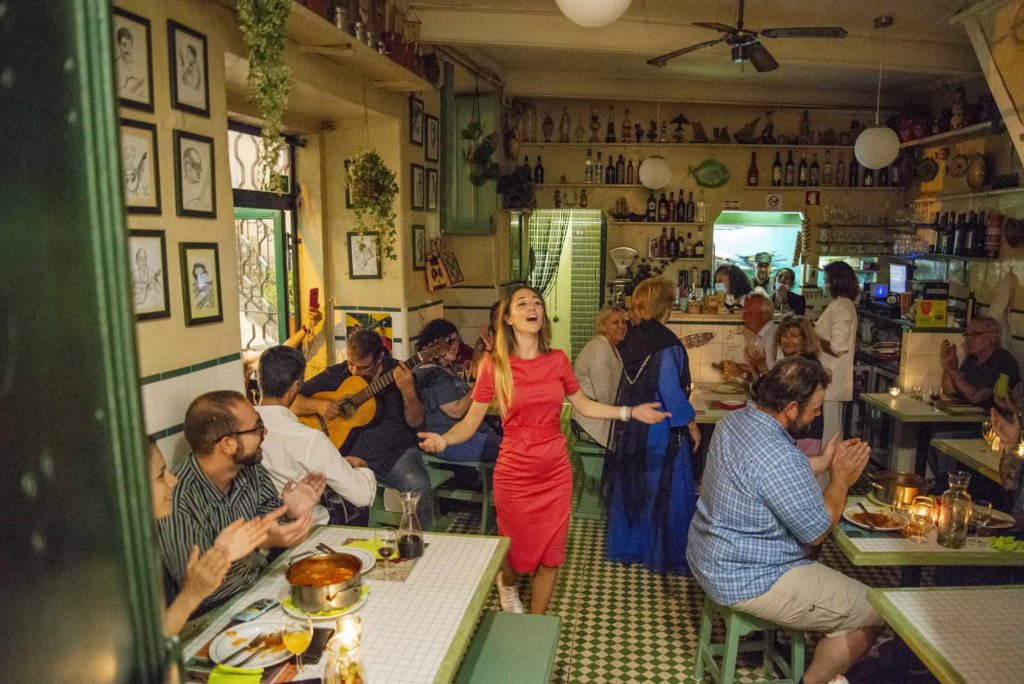
3 Days In Lisbon, Day 2
For day 2, we headed over to Belém, a must-see destination on any Lisbon itinerary. I quickly learned that it’s worth dedicating an entire day to exploring the area.
Jump on Tram 15 from Baixa, and in about 20 minutes, you will be in Belém. Once you arrive in Belém, there are loads of historical sites, attractions, and activities to explore, from the iconic Tower of Belém to the Jerónimos Monastery.
You can also stroll through the gardens at Ajuda Palace or visit one of the many museums in the area. After a full day of sightseeing, sample some traditional Portuguese pastries at Pasteis de Belém before returning to town.
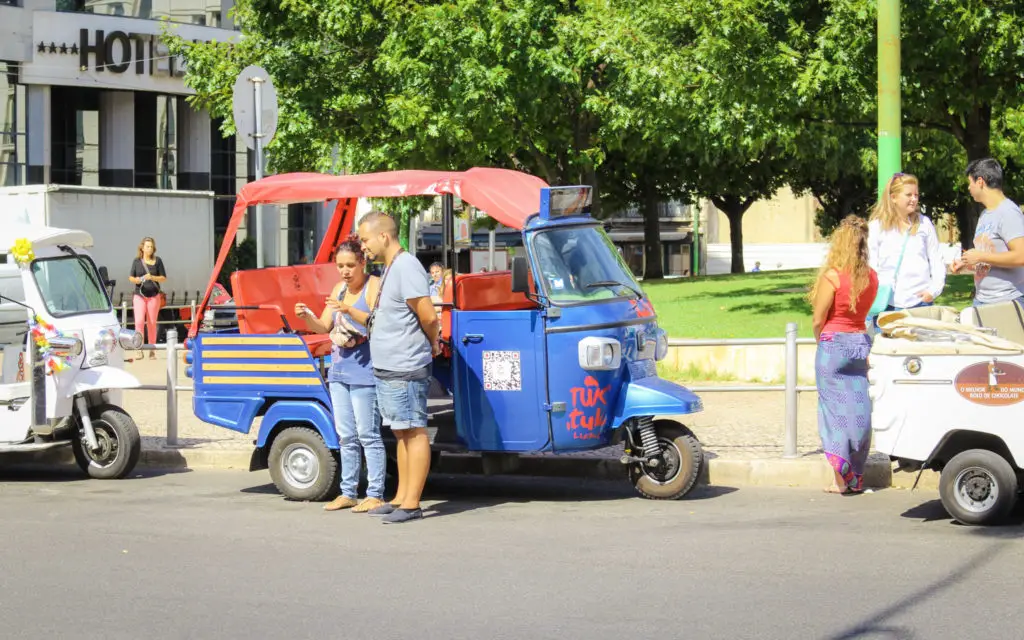
Mosteiro dos Jerónimos | The Jeronimos Monastery
Recognized by UNESCO for its important heritage, the Jeronimos Monastery is definitely one of the must-see Lisbon tourist attractions in Belém, Portugal. As a result, it can get busy, but the monastery is well worth the potential queue. I recommend visiting as early as possible to avoid long lines.
Once inside, you will be treated to the detailed Gothic architecture of the monastery and its inner cloisters. The monastery’s church is particularly impressive, with an ornate ceiling over the resting place of famed explorer Vasco de Gama.
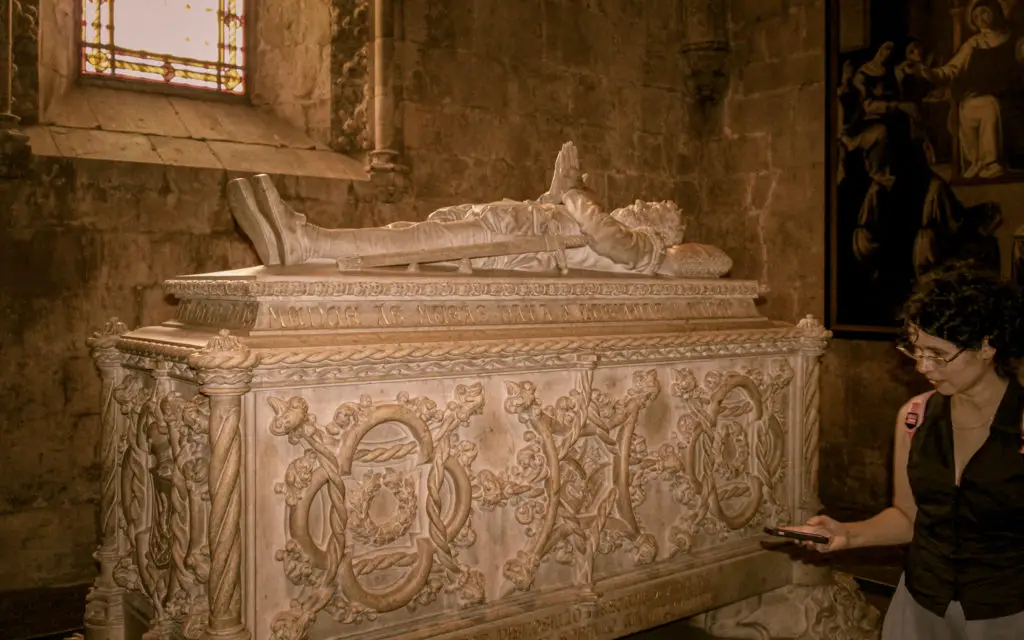
Mosteiro dos Jerónimos is a stunning example of Manueline architecture. It was built in the 16th century and is now one of Portugal’s most important religious sites.
Praça do Império Garden
Directly outside the monastery lies a large, manicured park with trimmed hedges around a big fountain. Here you’ll find a peaceful escape from the hustle and bustle of everyday life and a chance to relax and take in your surroundings. Whether looking for history or enjoying peace and quiet, Jeronimos Monastery is worth the visit.
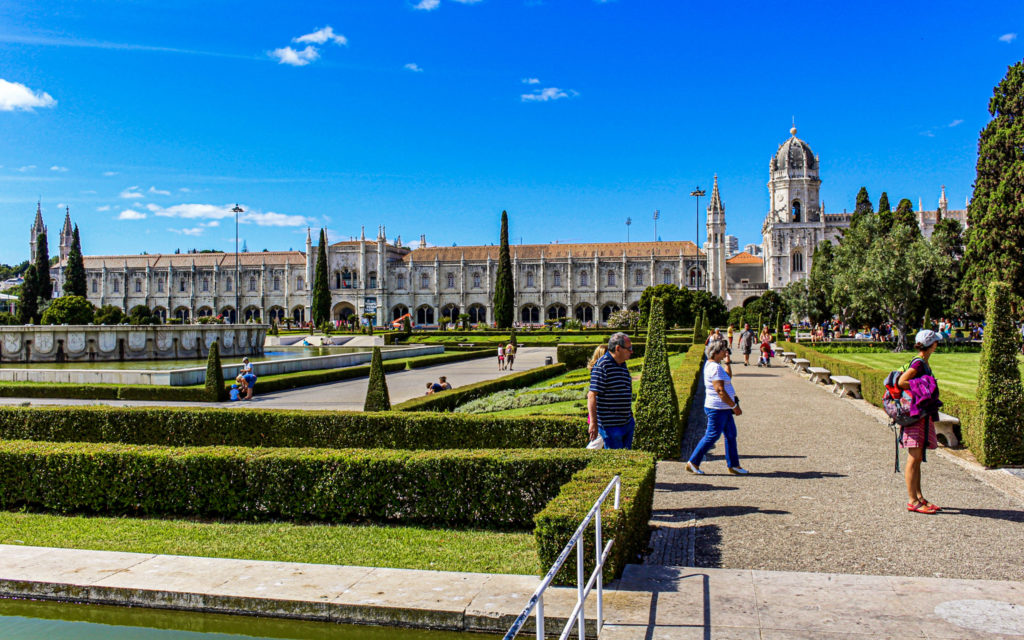
Padrão dos Descobrimentos | Monument to the Discoveries
The Monument to the Discoveries is a stunning tribute to Portugal’s many explorers and their achievements. Located across from the monastery, this stone tower is designed like a ship with famous figures aboard. At its base lies a square with intricate mosaic patterns around a compass, adding to the monument’s beauty and symbolism.
Climbing up to the top of the monument, I enjoyed the breathtaking views of both the monastery and the river beyond. It’s an impressive sight that serves as a reminder of Portugal’s rich history of exploration and discovery. During your visit, you can take in the grandeur of this memorial while reflecting on the accomplishments of these brave adventurers.

Pastéis de Nata | Portuguese Custard Tarts
Pastéis de Belém
If, for some reason, you haven’t yet tried a Portuguese Butter Tart/Custard tart on day 1, then now is the time. These egg custard tarts are a Portuguese specialty. The pastel de nata is an incredibly addictive pastry, with its flaky crust and creamy custard center.

Of all the Lisbon places to visit for Pastéis de Nata, the most famous place to get them is here in Belém, at the Pastéis de Belém bakery. This bakery has been using the same recipe for over 150 years, making it a truly special place to enjoy your first, second or third pastel de nata.
It’s best enjoyed warm and fresh out of the oven, so be sure to get there early!
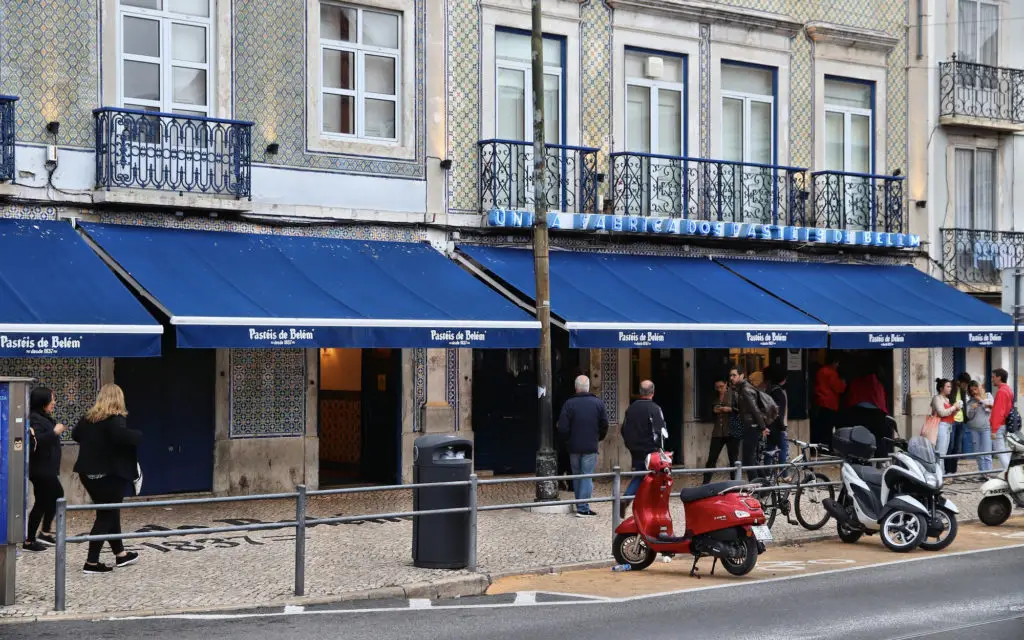
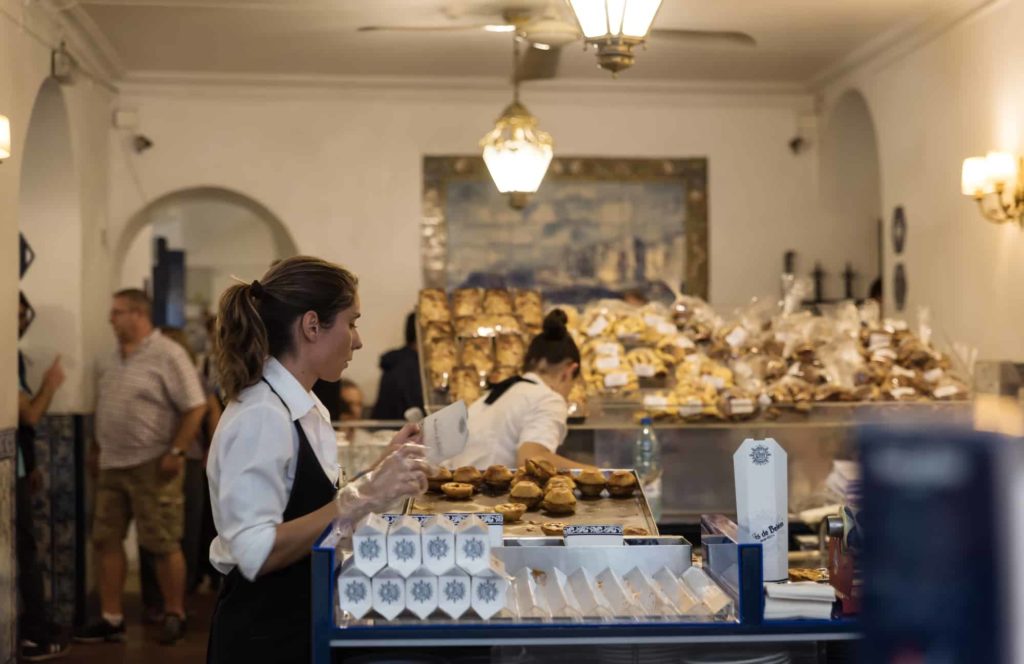
Torre de Belém | Belem Tower
The Belem Tower is a UNESCO World Heritage Site and an iconic landmark in Lisbon. Built in 1519, it was once used as a fortress to protect the city from invaders. Today, you can explore its interior and admire its stunning architecture. The tower also houses several artifacts related to Portuguese maritime exploration, including maps and navigational instruments.
There are guided tours available, explaining the tower’s history.
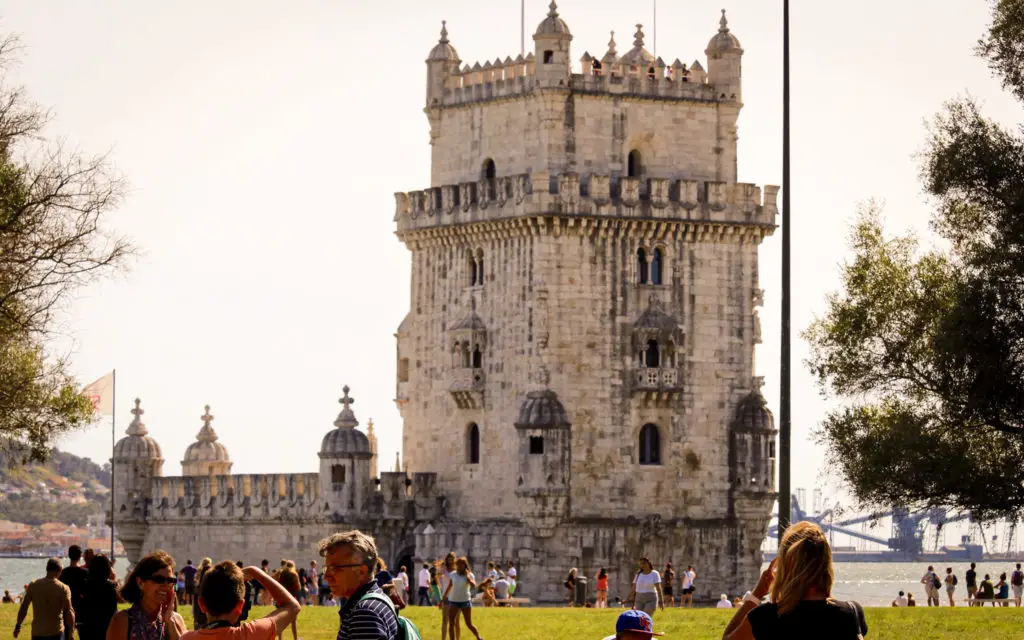
Alcantara Waterfront
25 de Abril Bridge
The 25 de Abril Bridge is a stunning landmark, well worth taking the time to appreciate its grandeur up close. Spanning the Tagus River, this immense bridge connects Lisbon with the far bank.
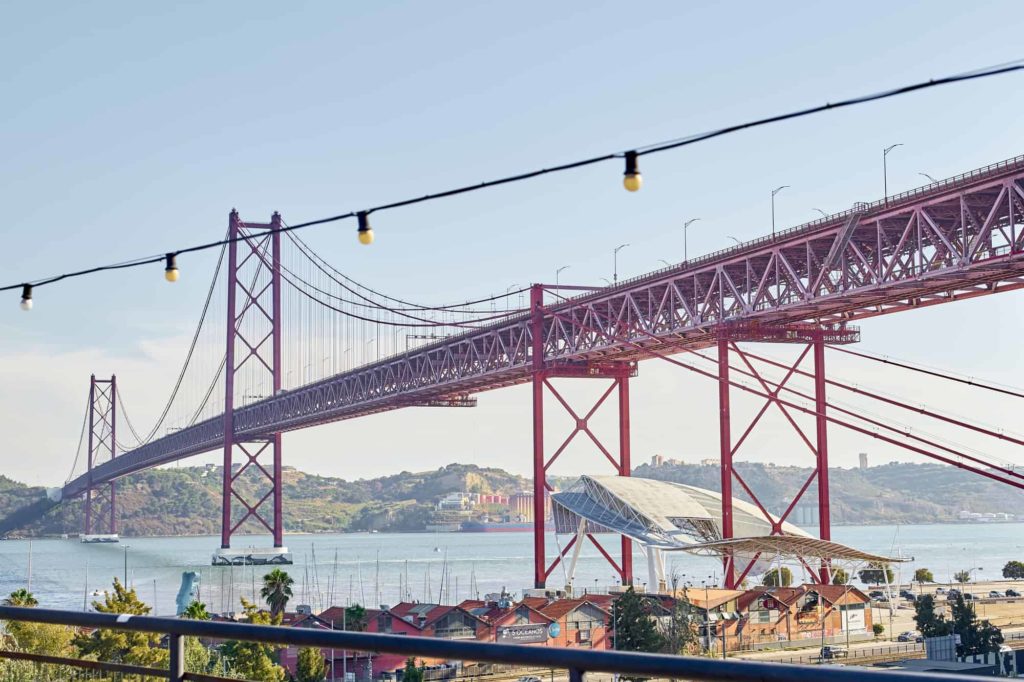
LxFactory
Just a stone’s throw away from the bridge lies the LxFactory, an area revitalized into a giant art space and a great place to explore and experience the city’s creative side.
The complex has several buildings, each with its unique atmosphere and activities. Here, you’ll find everything from art galleries, cafes, and restaurants to shops selling handmade items. It’s the perfect spot to grab a drink and relax.
The main attraction here is the LX Factory Bookstore, which houses over 10,000 books worldwide.
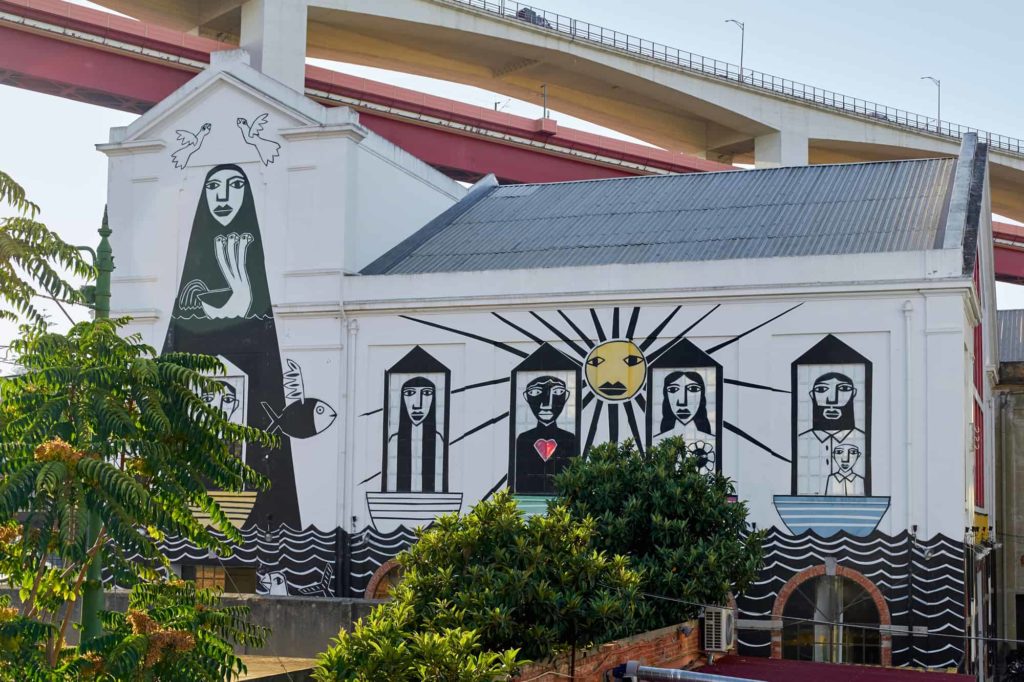
Sanctuary of Christ the King
The Sanctuary of Christ the King is a monument located on the south bank of the Tagus River in Almada. It was built in 1959 to commemorate the 400th anniversary of the death of Portuguese missionary Francis Xavier.
The monument includes a large white marble statue of Jesus Christ and a chapel dedicated to St. Francis Xavier. The statue stands over 70 meters tall and can be seen across Lisbon.
Inside the chapel, you can learn more about St. Francis Xavier and his mission work in Asia. Take an elevator to the top for stunning views of Lisbon and its surroundings.

Best Restaurants in Lisbon
On day 2 of my 3 days in Lisbon, I had the chance to indulge in some of the best food that the area has to offer. If you’re a foodie, like me, these two stops need to make it onto your itinerary.
Marisqueira do Lis
You can end the day at Marisqueira do Lis, a seafood restaurant in the heart of Lisbon. It offers a wide variety of fresh seafood dishes, from traditional Portuguese recipes to modern creations.
The menu includes grilled fish, shellfish, and other specialties such as caldeirada (Portuguese fish stew) and Arroz de marisco (seafood rice). They also serve an extensive selection of wines from Portugal and beyond.
The atmosphere is relaxed and inviting, with friendly staff always willing to help you choose the perfect dish.
Ramiro
Ramiro’s is another incredible seafood restaurant located in the heart of Lisbon. It has been serving up delicious seafood dishes since 1956 and is one of the city’s most beloved places to dine.
The menu includes traditional Portuguese recipes such as caldeirada (Portuguese fish stew) and Arroz de marisco (seafood rice), as well as modern creations.
3 Days in Lisbon, Day 3
For the final day of my visit, I decided to explore beyond the city boundaries with a fun day trip.
Sintra
Sintra is a small town located just outside Lisbon and is one of the most popular day trips from the city. It’s home to some of Portugal’s most stunning castles, palaces, and gardens, making it a must-visit destination.
The main attractions in Sintra are the Pena Palace, the Moorish Castle, and Quinta da Regaleira. The Pena Palace is an extravagant 19th-century palace built on a hill overlooking the town. Its colourful exterior makes it one of the most photographed landmarks in Portugal, so don’t forget your camera. The Moorish Castle is an ancient fortress that dates back to the 8th century and offers stunning views over Sintra. Finally, Quinta da Regaleira is a beautiful estate with lush gardens, mysterious underground tunnels and hidden grottos.
You can also explore Sintra’s charming cobblestone streets lined with shops selling traditional Portuguese souvenirs such as cork products and handmade pottery.
Getting to Lisbon from Sintra is easy with regular buses and trains running from the city. Plenty of tour companies also offer day trips to Sintra, so you can comfortably explore the town without all the planning.
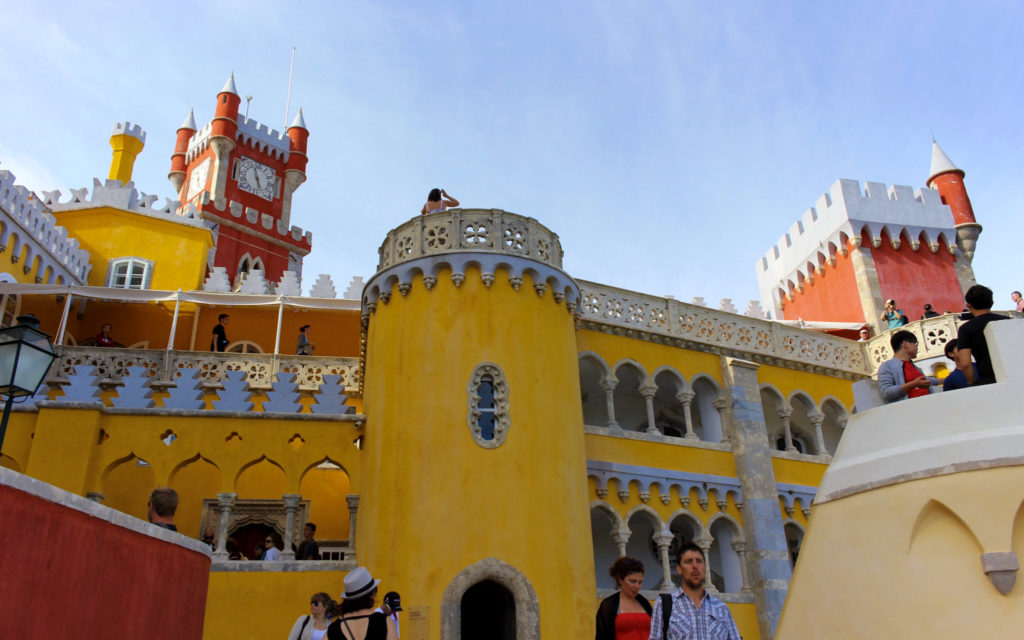
Best Places to Stay in Lisbon
Altis Avenida
Perfectly located on the Praҁa dos Restauradores, this hotel faces the Avenida da Liberdade on one side and the neo-Manueline, horseshoe-arched Rossio station on the other. It was built in Lisbon’s 1940s heyday and became a hotel in 2011, offering 70 elegantly designed rooms and a rooftop restaurant.
Brown’s Central Hotel
In the narrow streets of lower Lisbon, which run down to the wide Tagus River, this 18th-century building, with its pistachio green façade, offers 84 rooms and a buzzy bar and brasserie. Frequent art exhibitions, live performances, talks and pop-ups make this as popular with locals as with visitors.
Home Lisbon Hostel
In ‘downtown,’ Baixa, this hostel is on a pedestrian-only street and within walking distance of the city’s main sights, such as Praҁa do Comércio on the waterfront. This is a lively, buzzy district with new shops and cafés opening all the time. Lisbon Airport is 30 minutes away by the Aerobus shuttle, and Santa Apolónia Railway Station is a 20-minute walk.
Pedro’s Airbnb
While in Lisbon, we stayed in Pedro’s Airbnb. It’s a big room in a big apartment with big areas. Relaxing living room, a fully equipped kitchen and two bathrooms. It’s located in the historical part of Lisbon and has the famous Tram 28 running right in front, which we discovered while riding Tram 28 – “Hey isn’t that…yeah, that’s our Airbnb!” Pretty Cool!
Get Ready for an Incredible Trip to Lisbon
I hope that by sharing my itinerary, I have given you an idea of what to do in Lisbon during your visit. Personally, I think Lisbon is underrated. While I could have stayed even longer, I feel like 3 days in Lisbon is a great length of time to give you a new appreciation of what a great city it truly is.
Need I remind you, Portugal is connected solely by Spain on one side and the Atlantic Ocean on the other?
This means fresh seafood. So please do not come here and not have seafood, or at least try fish. They have mastered catching and preparing fish. However, they also know how to prepare chicken. They use this delicious secret spice sauce called Peri-Peri on the chicken, the fish, and the meat…it’s incredible.
Eat as many Pastéis de Nata’s as possible, then work them off on the steep hills as you explore all the wonderful side streets.
Am I related to Cristiano Ronaldo? Who knows? I’m still working on that. The earthquake of 1755 caused significant damage, including the loss of records and documentation. But I’m not giving up hope.
In the meantime, go visit Lisbon! You won’t regret it.
FAQs
What Is the Best Time of Year to Visit Lisbon?
The best time of year to visit Lisbon is in the spring (March to May) or fall (September to October) when the weather is warm but not too hot, and the crowds are smaller. These months are ideal for sightseeing, enjoying outdoor cafes, and exploring the city’s hills without the intense summer heat.
What Are the Best Free Things to Do in Lisbon?
Lisbon offers many free attractions, making it a great option for those interested in budget-friendly travel. Stroll through the historic Alfama district with its winding streets, enjoy panoramic views from Miradouros like Miradouro da Senhora do Monte, visit LX Factory’s street art, or relax along the Tagus River. Many churches also offer free entry.
What Indoor Activities Can You Enjoy in Lisbon When It’s Raining?
If you’re wondering what to do in Lisbon on a rainy day, the city offers many indoor gems. Visit the National Tile Museum (Museu Nacional do Azulejo), discover Portuguese art at the Calouste Gulbenkian Museum, or shop in the historic Armazéns do Chiado. You can also relax in a traditional café with a pastel de nata and watch the rain fall over the cobblestone streets.
Is Lisbon a Good Destination for Couples?
Yes, Lisbon is one of Europe’s most romantic cities. Couples can share sunsets from Miradouro da Graça, enjoy a candlelit dinner in Alfama, or take a tram ride through the areas’s charming neighborhoods. The mix of ocean waves, cozy wine bars, and historic charm makes it perfect for a romantic couple’s getaway.

We skipped Lisbon and went straight to Sintra. Looks like we missed a few interesting spots. Love the photos here, especially the vivid colors you captured of the Pena, and the way they all load on the page.
You did lots in 48 hours! I had to push Sintra to the third day.
Lisbon is so rich with monuments I wis I could spend some more time the. Good info on stay and commute there.
Your photos really show just how coloful and vibrant Lisbon is. I love practical guides like this. They really get the planning process churning, especially with practical tips like taking the #28 tram to pass the cathedral. It’s so hard to find these practical tidbits in traditional guide books.
I’m planning a trip to Europe next year and Portugal is hot! Lisbon looks great. I’m going to bookmark this guide as you have some great tips here. Tram 28 looks like a must-do.
Yes Lisbon is hot. It was sort of underrated but maybe after winning the UEFA World
Cup some eyes are back on Portugal.
Love the details in your recount, walks me right back to my 48 hours in Lisbon! The pastries (I know!) to the monuments. And it looks like I have to make it back to some places we missed!
Very interesting post, especially the layout. I have not been to Lisbon yet but it is high on my list. Lovely pictures too :).
Lisbon has long been on my travel wish list. Good to know I can do it in just two days if I have to! Thanks for breaking it down.
I’ve wanted to visit Portugal for quite some time now. Lisbon looks so beautiful, especially the architecture. Thanks you for the great suggestions, especially about the tram!
So excited for my Euro trip in 2017! Finally I will see Lisbon. Thank you for sharing this, makes me more excited.
What an extensive guide! I stayed in Lisbon for a week in 2012 and have done mostly monuments and fortresses. And oh, thanks for sharing PearlShare! This is the first time I heard about it, checked it out and liked it! Xx
Portugal is always there in my travel list. And from your pictures Lisbon looks like a place with great artistic value. Thanks for the detailed info.
I love the colourful scenes of Lisbon in these photos. It is definitely on my list of places to visit i 2017 and having an itinerary definitely helps. Thanks for sharing
I’ve been to Portugal , Lisbon. It’s one of the most beautiful country in Europe.
I tried seafood and Fado! It’s amazing!!
We havent been to Portugal yet but you have put together a great list of things to do and see! There is just sooo much color and charm there
Since recently Lisbon and Portugal, in general, are definitely a place I would really love to visit and probably soon I will. However, I would like to spend more than 2 days there for sure. 🙂
Lisbon has been on my radar for a few years now. The city is gorgeous and I want to get my fill of Pastel de Nada.
Lisbon is oneof my favorite destinations. It’s full of beautifu arhitecture, colorful buildings and just beautiful things to see. These aresome great tips of what to see. I’ll make sure to visit all of these next time in Lisbon.
Can’t wait to visit Portugal…so jealous. This is a great guide for what to do in just 48 hours. So much to do. This is the first time I’m reading about and listening to Fado…beautiful! I will certainly plan for more than 2 days to discover the country and city of Lisbon. Can’t wait to try the pastries!!
Lisbon is definitely one of the best capital cities and it’s great to know that Lisbon can be explored well in 48 hours! Trying out tram and exploring the monuments including the cathedral is high on my list!
I agree with you, way more time than 2 days is needed in Lisbon. What an amazing city, so vibrant and alive!
I’d love to visit Lisbon but I reckon I’d need more than 2 days! Although I totally get it if that’s all the time you had – you definitely made the most of it. And I had no idea they had their own Christo Redentor statue – when i first opened the post I thought it was going to be about Rio!
Lisbon is one of my favorite cities so this post brings back great memories. I loved exploring Belem and eating all the pastries. Sintra is a must see!